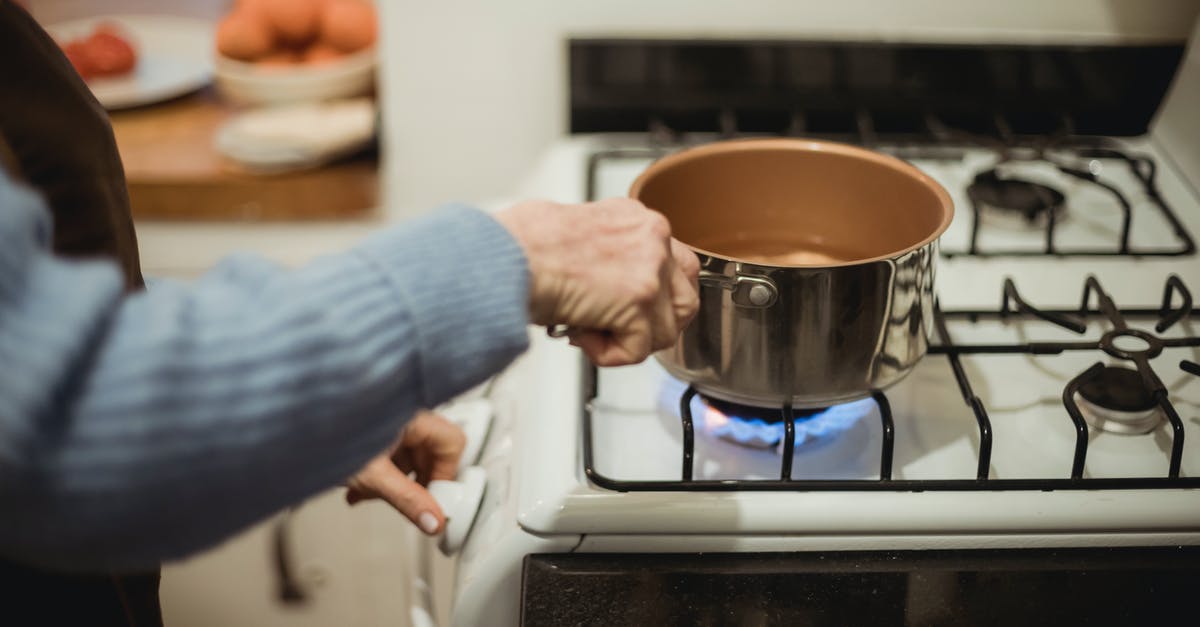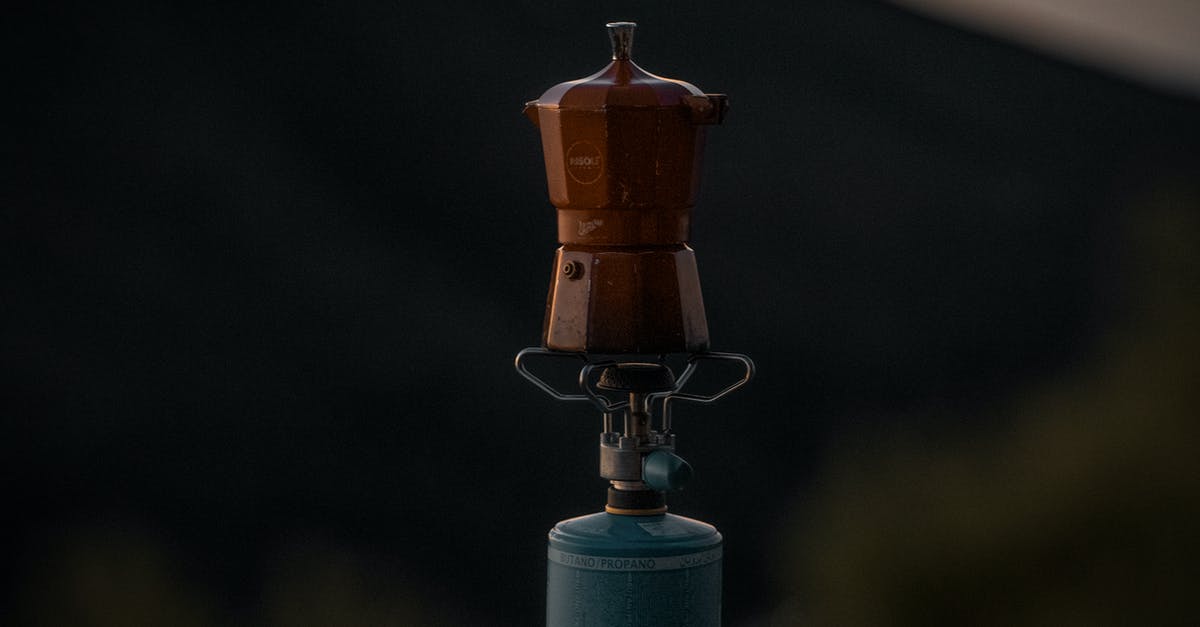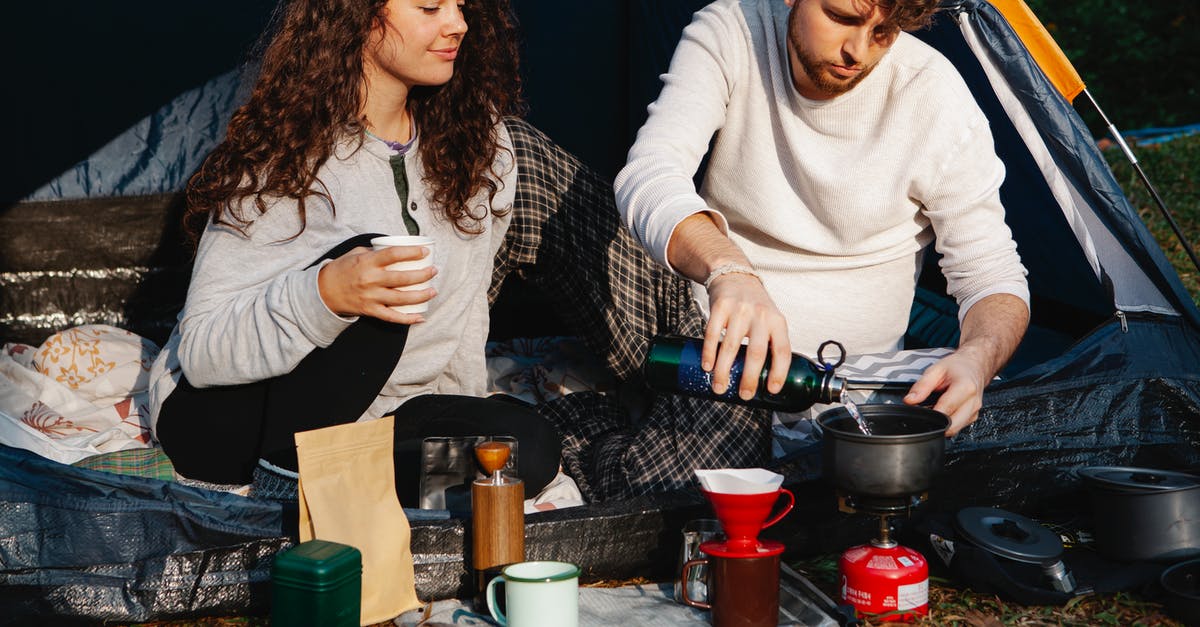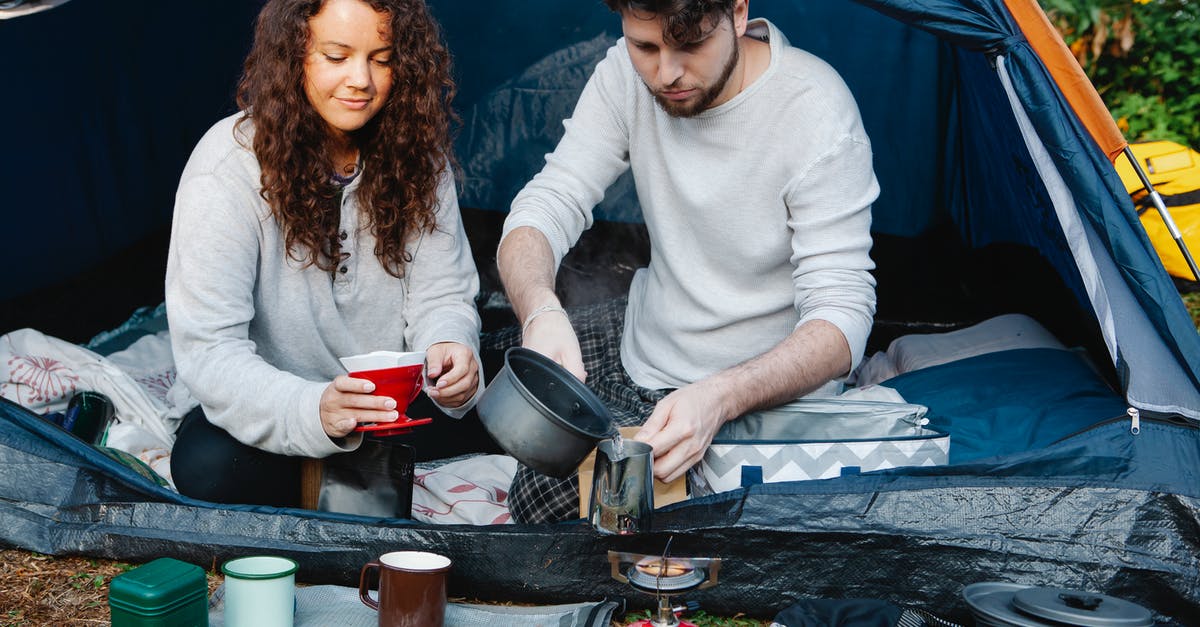Is a borosilicate glass pot safe to use on a gas burner stovetop?

I've seen similar questions about Pyrex, but as I understand it Pyrex manufactured in the United States is now made from tempered soda-lime glass, so I am not asking about that.
UPDATE: To address a similar question: the answer to the question on Pyrex was, first of all, a generic question on Pyrex (not just borosilicate Pyrex), and it left an open ended answer for personal testing on borosilicate, which doesn't answer my specific question, and it attracted boarder answers (many completely oblivious to the materials used). I'm really looking for a specific answer from personal experience with borosilicate.
The Question:
I specifically would like to know if anyone has used a (verified) borosilicate glass pot on a gas burner stove top, and if it is safe for regular use, and by "regular use" I would specifically mean:
- Is it safe to take a chilled pot from the refrigerator to a full open flame?
- Is it safe to take a pot that has been on a full open flame (for an hour or so) to the bottom of the sink (risking a little cool water splash)?
OR are there limiting factors, and if so, what are they?
I just want to make sure I can treat a borosilicate pot the same way I might a regular pot or pan. I've done a decent amount of research, and according to the stated temperature limits, it would seem that it might be okay, but I've not seen enough information on the effects of rapid temperature change. So I'm really interested in actual experiences.
I once spat on a hot incandescent light bulb, and I just want to make sure this pot won't explode the way that light bulb did.
Best Answer
I specifically would like to know if anyone has used a (verified) borosilicate glass pot on a gas burner stove top
I have used borosilicate glass vessels on a number of different heat sources, both in laboratory circumstances and on a standard home gas stove.
and if it is safe for regular use, and by "regular use" I would specifically mean:
- Is it safe to take a chilled pot from the refrigerator to a full open flame?
- Is it safe to take a pot that has been on a full open flame (for an hour or so) to the bottom of the sink (risking a little cool water splash)?
Generally speaking, no. I mean, it depends on what you mean by "safe" -- borosilicate glass is less likely to shatter in explosive ways compared to some other types of glass. Glass vessels designed specifically for cooking are probably even less likely to fail in a way that is dangerous.
But will the vessel survive doing such things repeatedly over an extended period? Probably not. It may eventually crack. Depending on how extreme the temperature difference exposed to, it may even break more violently. But most likely, cooking vessels like this will simply fail by developing a crack (which will then leak contents).
OR are there limiting factors, and if so, what are they?
I would consult the specific documentation that comes with any glass cooking vessel for guidelines appropriate to it. (And in case this isn't clear, I would NOT recommend using borosilicate glass vessels on the stove top unless they are specifically designed for such use. Even lab glassware will eventually crack if not used over an even heat source, which is why labs tend to use various heat diffusion devices when employing an open flame on a glass vessel.)
For example, the Pyrex company had a set of glass pots for stove top use called Flameware, which was discontinued (I believe) in the late 1970s. Instructions can be found here, which state (among other things):
Heat uniformly, using low to moderate flame [...] Do not heat when dry or cook to dryness. [...] Add water before food is put in dish and stir occasionally while boiling. [...] When dish is hot, avoid pouring in cold liquids. [...] Avoid setting dish on damp or cold surfaces.
All of these warnings have to do with avoiding stress created through rapid temperature changes, which will eventually cause a pot to fail. Note these are warnings for a line of Pyrex specifically designed for stove top cooking.
For a standard producer of borosilicate glass for stove top use today, see JENA's Trendglas, whose products here are specifically designed for direct heat:
The very even wall thickness ensures outstanding thermodynamic qualities so that our glass products can be placed directly on heat sources. [...] Our glass products [...] show a high resistance to sudden temperature changes with a temperature difference of 140°C/284°F (three times as high as normal glass or lead crystal glass)
These glass products have instructions here. And that document includes similar warnings to the Pyrex products discussed above:
- [...] Always use evenly distributed heat and never heat your Trendglas JENA product empty. The heat source and the glass shall be heated together.
- Avoid sudden cooling, don't place the hot glass under cold water or on wet hot pads. [...]
- Only heat water-containing foods on the stove, never use it for heating solid foods or oily liquids.
- Make sure that the hob is not smaller than the bottom of the glass product. [...] When using a gas stove, we recommend using a gas stove grate.
Basically, glass is a substance that can crack from thermal shock. No amount of engineering is going to make a glass vessel as durable and resistant to thermal shock as a metal pot. That said, scientists use borosilicate glass all the time in complex procedures involving heating and cooling, and exploding glassware is rare unless you do something very stupid. But cracks and failures of glassware that is used over and over for applications involving thermal stress and rapid temperature changes are also to be expected.
If you follow the manufacturer's instructions for your pot and take advice like that listed above (avoiding thermal stress, heating gradually, etc.), some glass pots can last for many years or decades. And you may get away with occasionally forgetting and making a mistake. But even if cracks don't appear immediately, those stresses can build up over time and eventually cause failure.
EDIT: After reading over some of the comments that have appeared, I wanted to incorporate some ideas and re-emphasize a point I stated above: I would NOT recommend using borosilicate glass vessels on the stove top unless they are specifically designed for such use.
Some of the answers on previous questions about borosilicate versions of Pyrex (still to be found, particularly outside the U.S.) say it may be possible to attempt to heat borosilicate containers (Pyrex or otherwise) on the stove top, but I would strongly advise against this unless it's actually a vessel labeled for stove top use or described in its instructions as appropriate for stove top use.
It's not just borosilicate glass itself that makes a pot or other vessel safe for the stove top. Glass intended for use on the stove top usually has higher standards for production. It is often more even and thinner (like lab glassware) than some other types of glass bakeware and kitchenware, as thicker glass will have a larger thermal gradient between the surface and interior that can make the glass vulnerable to fracture. It may employ a somewhat different formulation of ingredients in the glass (to respond better to thermal stress, rather than to emphasize durability). It may also have specific design features in terms of its shape and variance in thickness to account for the type of expansion that occurs during stovetop heating (i.e., heating from the bottom) vs. bakeware that will usually expand more at the top (because food inside will be cooler in the initial stages of baking, while the top of a glass baking dish may get hotter without food in direct contact with it). And I'm sure there are other design features that make glass safer for stove top use.
User SiHa linked a video showing what can happen if borosilicate glassware is inappropriately heated. That measuring cup is specifically labeled as not for stove top use, and it's not designed for that sort of stress. A measuring cup is probably only expected to take the variation in temperature caused by things like introducing boiling water, not an open flame applied to it. But also note that the catastrophic failure in that video (and mild explosion) likely happens due to two things:
- the uneven heating of a blowtorch, which already inflicts a huge amount of stress even without the introduction of water; the third cup breaks even before they apply water to it
- the thickness of the cup, which is designed to be durable and to resist breaking when handled roughly or dropped, not for heating; the thickness allows more energy to build up in the cup before fracture, leading to the explosive burst, rather than the more mild fracture than would likely occur in a thinner vessel
I don't mean to scare anyone too much here, only to emphasize the importance of only using glassware designed for direct heat on the stove top. As I mentioned in my original answer above, when borosilicate glassware designed for direct heating fails, it is more likely to crack (perhaps crack a lot, but still simply crack into pieces) if handled appropriately. That can create a mess, but it's usually not dangerous or explosive unless one does something stupid with it.
Pictures about "Is a borosilicate glass pot safe to use on a gas burner stovetop?"



Quick Answer about "Is a borosilicate glass pot safe to use on a gas burner stovetop?"
BOROSILICATE GLASS is heat and cold proof (up to 572° F and down to -40° F), so you do not need to worry about it cracking or exploding. Plus, this lab-grade glass has a high shock resistance (of course, avoid extreme temperature changes). Stovetop, microwave, oven, electric plate, dishwasher, and cold storage safe.Can you use a glass pot on a gas stove?
Visions cookware can be used on the rangetop (gas and electric), in the oven (conventional, convection, and microwave), and under a broiler. It can even be used on a grill or over a campfire!Can borosilicate glass be heated?
Borosilicate glass is highly heat and cold resistant. During regular use, the glass can be heated up to 392 degrees Fahrenheit to 446 degrees Fahrenheit. For short-term use, it can survive up to 752 degrees Fahrenheit. Some types may even be able to withstand up to 932 degrees Fahrenheit.Can I use a glass pot on stove top?
Most glass cookware (Pyrex and such) is tempered glass, which isn't really safe for stovetop use. Stovetop puts stress on glass because all the heat is coming from the bottom and highly concentrated, so if you put a tempered glass casserole dish on a burner, it is likely to shatter.Can we use Borosil glass bowl on gas stove?
Since the bowl is made of Borosilicate glass and is comparatively tougher than normal glass, it is safe to use in the microwave and on gas since it can easily withstand high temperatures. And by high temperature, we mean it can withstand heat up to 350 degrees centigrade.Ecooe Glass Teapot Review #mannequinchallenge | Indian Cooking Recipes | Cook with Anisa
More answers regarding is a borosilicate glass pot safe to use on a gas burner stovetop?
Answer 2
No.
Is it safe to take a chilled pot from the refrigerator to a full open flame? Is it safe to take a pot that has been on a full open flame (for an hour or so) to the bottom of the sink (risking a little cool water splash)?
...
I just want to make sure I can treat a borosilicate pot the same way I might a regular pot or pan.
The answers to all of these questions is no, it is absolutely not safe. You would be playing russian roulette, the question is not if but when it will break and leave you with a dangerous mess. The material was not designed to be used this way and cannot be treated like a metal pot. Yes, it's intended to be able to withstand high amounts of thermal shock, like being moved from a freezer to an oven, but open flames or other stovetop cooking methods are an entirely different matter.
I just want to make sure I can treat a borosilicate pot the same way I might a regular pot or pan. I've done a decent amount of research, and according to the stated temperature limits ...
The link shows you exactly why you cannot -- borosilicate should only be used at temps around 400 C for a short amount of time and begins softening at 800 C. A gas burner can reach temps up to 2000 C, and even the cool flames are well above 800.
Answer 3
Chemex coffee pots are made of borosilicate glass, and the Chemex web site explicitly says that you can use a low gas flame to keep the coffee warm. But I would worry about drastic temperature changes like putting a hot pot under running water.
Answer 4
I would be thinking about the worst case failure mode, however unlikely. The pot shatters, the contents are no longer supported by the sides of the pot.
Could that result in the cook being seriously burned? If it's food that is liquid, such as soup, the answer is yes. If it's basically solid, no.
If the pot is in an oven or microwave, that provides some containment. A big mess, but not a pint of boiling soup headed for the cook's groin.
Sources: Stack Exchange - This article follows the attribution requirements of Stack Exchange and is licensed under CC BY-SA 3.0.
Images: Teona Swift, Luke Barky, Vanessa Garcia, Vanessa Garcia
